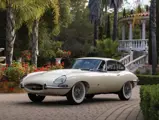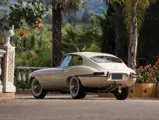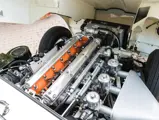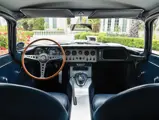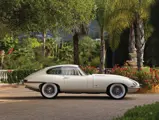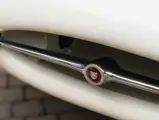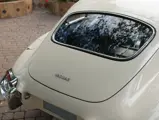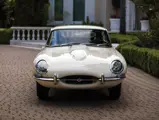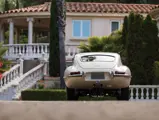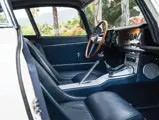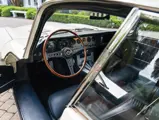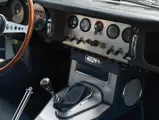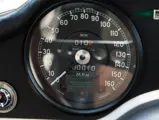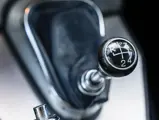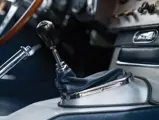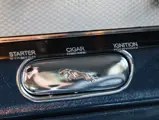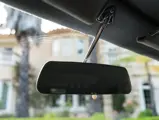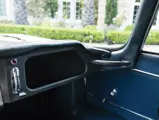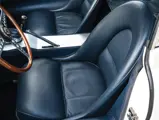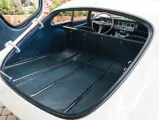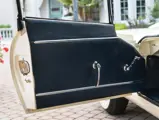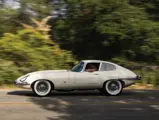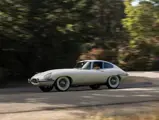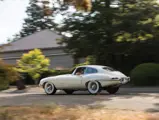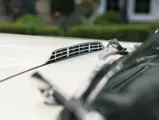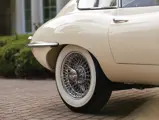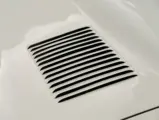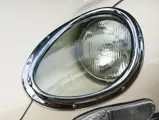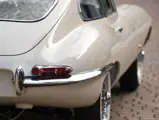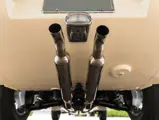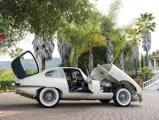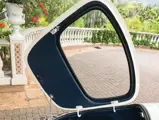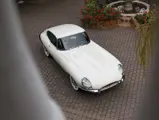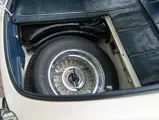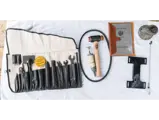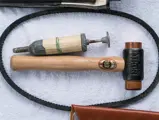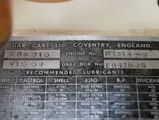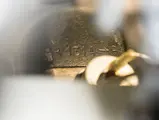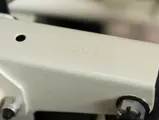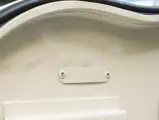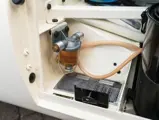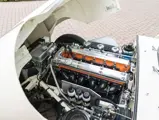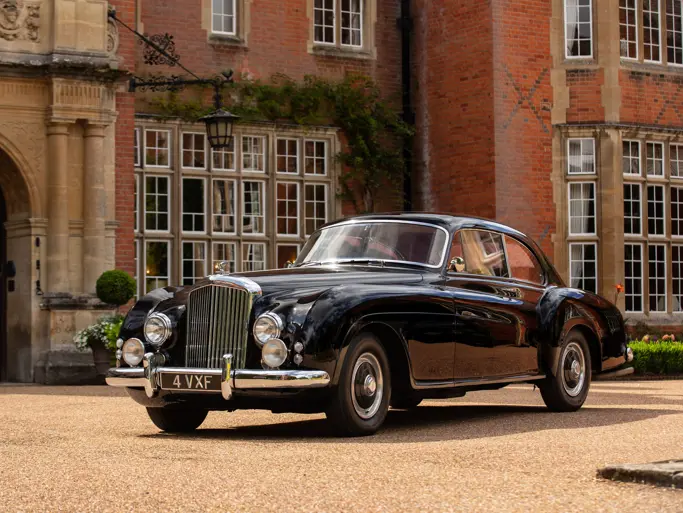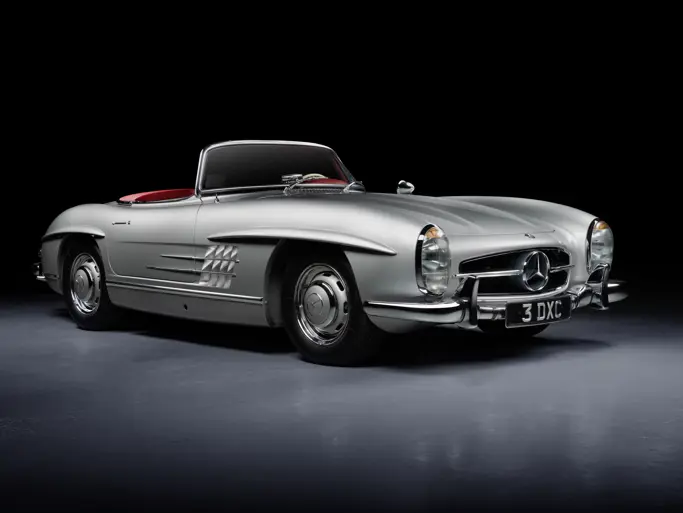Monterey 2018
1961 Jaguar E-Type Series 1 3.8-Litre Fixed Head Coupe
{{lr.item.text}}
$720,000 USD | Sold
 | Monterey, California
| Monterey, California
{{internetCurrentBid}}
{{internetTimeLeft}}

- The Holy Grail of early E-Types
- Outside bonnet latch, welded bonnet louvers, and flat floor
- Chassis no. 10 of 20 early production LHD coupes; one of 11 known to exist
- 51-year long-term tenure by its second owner until 2014
- Recently completed no-expense-spared restoration by marque expert David Ferguson
- Done to exacting standards, using original sheet metal and unobtainable NOS parts
- Original chassis, engine block, and gearbox; correct-type cylinder head
- Jaguar Heritage Trust Certificate
Whether one referred to it as an E-Type or an XKE depends upon which side of the Atlantic one hailed; the former in England and the latter in the U.S. Regardless, this was, most assuredly, the sexiest car of the 1960s (if not still). It followed the Jaguar method – sensational looks, sensational performance, and a sensationally low price – which had been introduced so successfully with the XK 120 in 1949 and restated with vigor in 1961. The E-Type made Jaguar young and exciting once again. Replacing the voluptuousness of the former XK 150 was the sleekness of the new E-Type. What remained, however, was the undeniable sex appeal of the Jaguar formula.
The E-Type was preceded by the competition D-Type of the mid-1950s and its short-lived production version, the XKSS of 1957, as well as the experimental competition car entered by Briggs Cunningham at Le Mans in 1960. Like the D-Type, the new car used monocoque construction; the front of the chassis featuring a space-frame with steel tubes supporting the engine, the front suspension, and the hinged hood and fender assembly which lifted to provide virtually unlimited engine access. The proven twin-cam inline six-cylinder engine of the former XK 150 S, four-wheel independent suspension, and disc brakes at each corner were featured. One hundred fifty mph was promised, too – all for a price of about $6,000.
According to Dr. Michael Mueller, co-author with Dr. Thomas F. Haddock, of the Jaguar E-Type 6-Cylinder Originality Guide, of the first 500 Jaguars produced with outside bonnet latches in 1961, 385 were left-hand-drive roadsters and just 20 were fixed head coupes (there were also four RHD coupes). Of those 20, 18 actually left the factory, as car no. 1 was destroyed by the factory and no. 7 burned while still there. Only 11 of those built are known to remain today. Mueller has not only owned four of the original coupes, he has carefully examined each of the remaining examples.
The Jaguar Heritage Trust Certificate confirms that chassis 885010 was originally delivered to Montreal, Canada. The original ownership is noted as Terra Construction Company in Ottawa. The first owner is said to be Vernon Corbet. However, Vernon was apparently rather tall and only owned the E-Type for several years before selling it to its second owner, Rob Hopper. Hopper, on the other hand, would enjoy the car, taking it on Sunday drives to his cottage just outside of Ottawa and never driving it in the rain or in the city. Incredibly, he continued to own the Jaguar for the next 51 years before it was ultimately acquired by Jaguar expert Terry Larson who purchased the very rare fixed head coupe around 2014. It was then acquired on behalf of the current owner who had been searching for such a rare E-Type.
Following an exacting, recently completed restoration and finished in its original Cream over a blue leather interior, Dr. Mueller maintains that, “Number 10 is certainly one of the most authentic, in terms of the parts that are still on her as when she left the factory.” A recent seven-page story by Paul McNabb chronicles the exhausting research and restoration of this car and is available for inspection.
David Ferguson, owner of Images Auto Body in Campbell, California, is responsible for the restoration of this remarkable early E-Type. Work began with a virtually complete car, including the original body, doors, and bonnet, as well as engine block and gearbox. According to Dr. Mueller, this is the only early coupe to retain these items. The consignor and restorer took painstaking efforts sparing no expense to research and acquire the correct and rare NOS parts in order to make this the most authentic restoration possible. The cylinder head was not original, and a proper date-code unit was sourced and installed. Mueller adds, “Most unbelievably, number 10 has an original factory radiator, which is unheard of on an early production car.”
Complicating the restoration was the fact that virtually every part on the car is different than later production cars. It is thought that the early coupes began life as roadsters with a team of skilled craftsman welding tops on roadster bodies. As such, the early coupes feature nearly countless differences from the full production cars built months later. Having examined and restored other early coupes, Ferguson confirmed these peculiarities – which range from the size of taillights to a flatter roofline and smaller gas cap door. One noticeable difference is the smaller rear deck lid and rear glass which is fitted with hand-made steel hinges rather than the later cast aluminum parts.
Rarer than a D-Type or C-Type and as rare as an XKSS, these early fixed head coupes are seldom made available, and most remain in long-term private ownership. Do not miss this opportunity to obtain one of the most unusual and significant early E-Type coupes that has come to market in recent memory.

